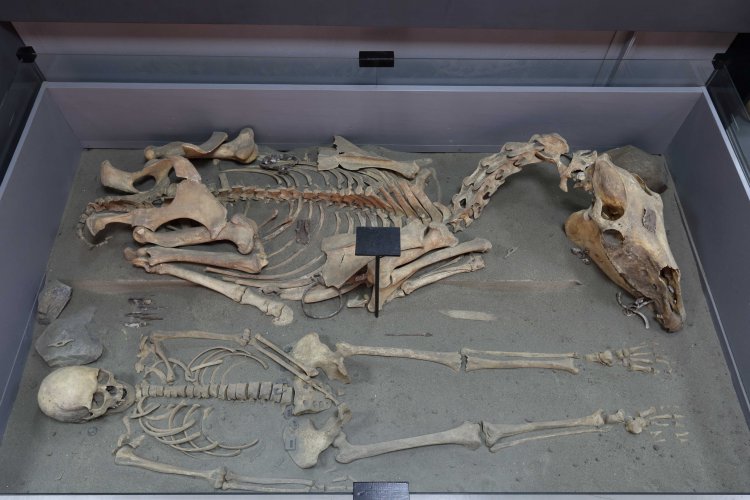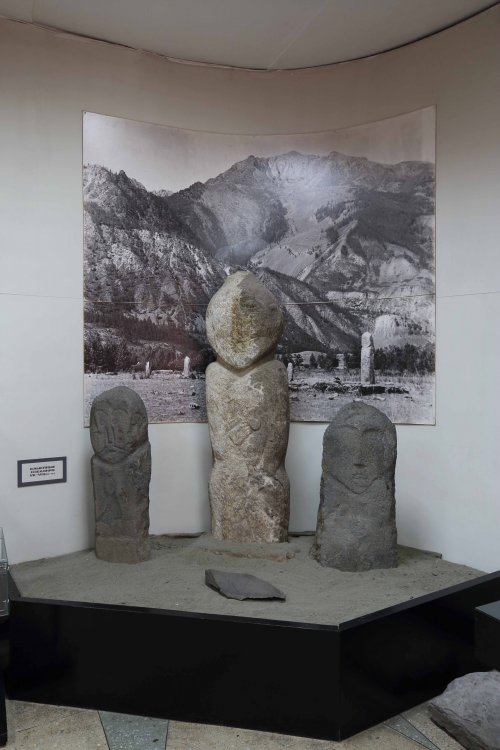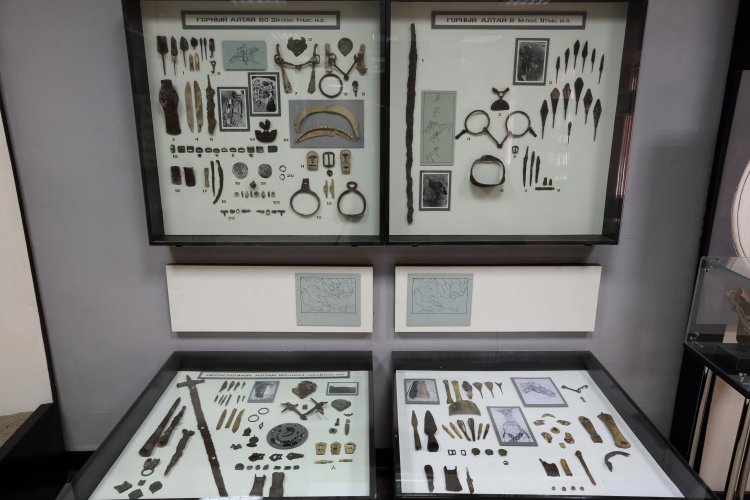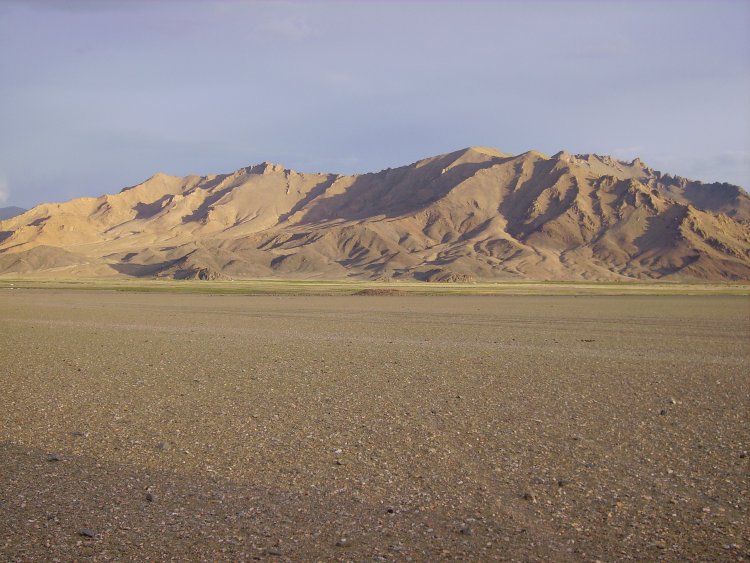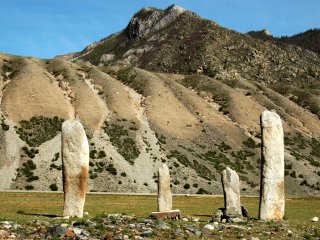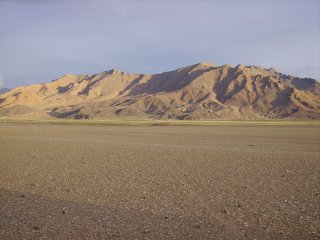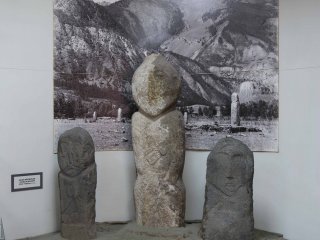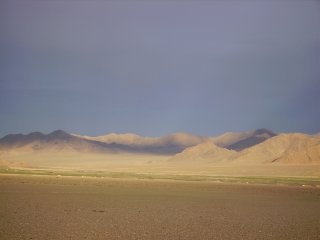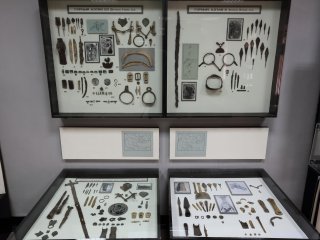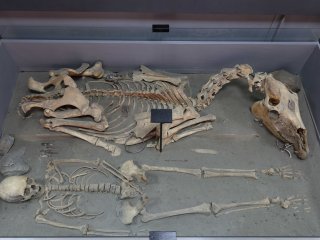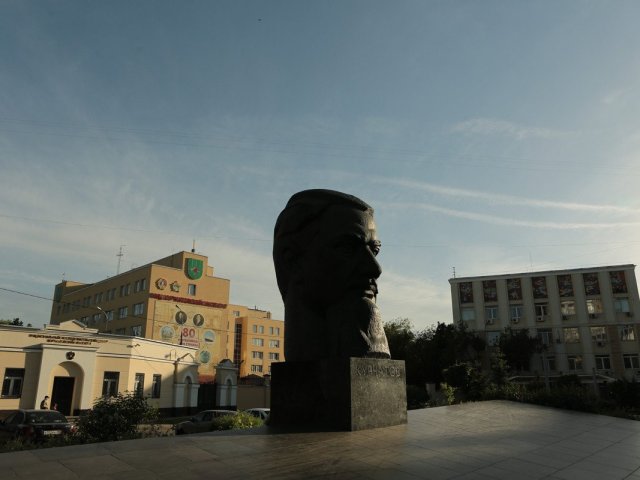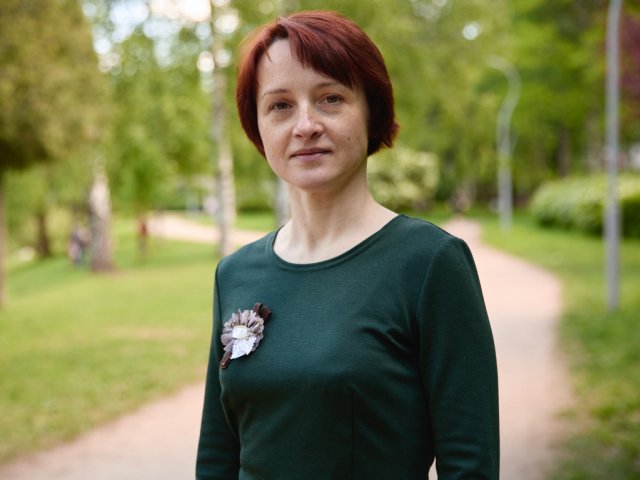Altai State University (Barnaul) specialists in cooperation with scientists from Central Asia are studying the historical and cultural heritage of Turkic civilization as part of a large-scale complex project. The research in the field of Altai and Turkic studies is based not only on the need to update these interdisciplinary fields of scientific knowledge and strengthen scientific relations between Turkic centers, but also on the need to promote the unity of Turkic peoples by means of common historical roots
Greater Altai is a unique historical, cultural, natural and geographical territory having high scientific potential for world research. The monuments of archaeology, ethnography, history, and culture have witnessed the creation of ancient countries and the life of Turkic peoples of Central Asia.
Specialists at Altai State University (Barnaul) have been working on the history of Altai for many years. This allowed researchers to start the project The Turkic World of the Greater Altai: Unity and Diversity in History and Present Times, supported by the Ministry of Science and Higher Education of the Russian Federation in 2020. In the framework of the project, Russian scientists, together with their foreign colleagues, plan to study the social, ethnic, religious, ethno-political processes of Turkic civilization on the basis of archaeological and written sources. In the context of contemporary society modernization, the reference to historical roots and cultural memory contributes to the inheritance of national traditions and the unity based on common Eurasian spiritual heritage at the same time.
The Altai State University (Barnaul) scientists, Yulia Alexandrovna Lysenko, Professor, Doctor of History, Head of the Department of Oriental Studies, and Sergey Petrovich Grushin, Professor, Doctor of History, Member of the Department of Archaeology, Ethnography and Museology of the Institute of History and International Relations, talked about the key aspects of Turkic world history in the context of academic science and about the upcoming monograph project that will introduce Turkic peoples' history since the ancient times and till the present days.
The study of Turkic civilization is carried out within the framework of a complex scientific discipline called Altaiistics. Linguists, archaeologists, ethnographers, religious scientists, historians, culturologists, who work together to reconstruct the stages of formation, growth, and development of Turkic ethno-cultural community, are working in this scientific direction. Scientific research and archeological and ethnographic expeditions allow specialists to discover the settlement areas of the Turkic tribes of Altai (including adjacent territories of modern Russia, Mongolia, Kazakhstan, and China) in the medieval period, as well as the directions of their migration, forms of interaction with neighboring ethnic groups, which will result in the reconstruction of the general picture of Turkic tribes’ ethnopolitical development, their social organization and economy.
“One of the most actual scientific problems today is a problem of the Turkic ethnos origin. The main problem of Altai archaeology is related to the identification of early Turkic archaeological monuments. It is important because this period was the Turkic tribes’ origin, their writing and culture formation. And researchers need to trace and identify early Turkic contacts with neighboring tribes, to compare archaeological finds of the era, and their material remains with written monuments of the Turks. This serious problem of combining written and archaeological sources in the Altai is an important task for both archaeology and history,” Sergey Grushin highlighted the relevance of studying ethno-cultural processes in the Central Asian region.
Stone sculptures of the Turkic period in Altai.
Archaeological artifacts associated by scientists with the Turkic ethnos are widespread in the vast territory of Altai, Central and Eastern Kazakhstan, Mongolia; they are also found in the foothills of Altai and the southern regions of Western Siberia.
“When studying Turkic archeology, the funeral complexes (barrows where the Turkic ethnos representatives were buried) and funeral fences (stone sculptures – funeral ritual structures or, as they call them, “stone women”) were studied mostly. Such artifacts as weapons, vessels, and other things are found here. The settlement complexes have been studied considerably less. It is related to the fact that the Turks were nomadic tribes and had a mobile way of life. Therefore, we are unlikely to find stationary settlement complexes of this culture at any time,” the researcher noted.
Reconstruction of a Turkic tomb. VI-VII centuries. Archaeological Museum of Altai State University.
How do they reveal the discoveries of the Greater Altai?
“Archaeology is a unique science in this regard. Archaeologists amaze an ordinary person by the fact that they can see under the ground, meaning they can see what others cannot. In fact, it's not providence or intuition. It is the experience accumulated over 200-300 years of archaeological history, by which scientists have learned to identify archaeological objects on the surface of the earth and determine the time of creation and type of a monument by external signs.
Besides, nowadays the new means of information search, fixation, and diagnostics of archaeological data, such as geomagnetic reconnaissance, are widely used. They study anomalies and, according to their data, you can get a map of the archaeological objects distribution. There are methods to identify objects by the color of vegetation with the help of space images, in particular. Archaeological sites have their own peculiarities: the early sites differ from the late ones. Each traditional culture develops its own images and its embodiment in the material culture and funerary monuments,” said the scientist.
The Museum of Archaeology and Ethnography, Altai State University. Turkic stone statues
It is important to note that Altai State University has a rather strong scientific archeological school, which has been established for more than a decade ago. The History Department of the university has become a successor of the Tomsk School of History. Yury Fedorovich Kiryushin, the founder of the Laboratory of Archeology, Ethnography and History of Altai, professor, doctor of historical sciences, played a great role in the development of scientific traditions and specialization of the Altai School. The Laboratory of Interdisciplinary Study of Archaeology of Western Siberia and Altai, which is headed by RAS Academician Anatoly Panteleyevich Derevyanko, has been active in Altai State University in recent years.
As it was emphasized by Sergey Grushin, “thanks to the activities and authority of Anatoly Panteleyevich Derevyanko, we have a very powerful archeological school now. This is one of the reasons why the idea of research project The Turkic World of the Greater Altai: Unity and Diversity in History and Present Times appeared at our university. Besides, the Turkic ethnos formation is somehow connected with the Greater Altai in a broad historical and geographical framework: Russian, Mongolian, Chinese, and Kazakh. Our university is one of the leading classical universities in the Altai region and it has considerable research experience in studying the Turkic epoch and the historical and cultural heritage of Turkic peoples. Therefore, this project was logically launched on the basis of our university.
The project involves cooperation of many scientific and educational centers of both Russia and Central Asia countries. The scientists of Altai State University have been cooperating with their colleagues from the Institute of Archaeology and Ethnography of Siberian Branch of Russian Academy of Sciences (Novosibirsk) for many years. Both academic and university science benefit from such interaction. We are currently working on creating a consortium, which will include the universities conducting research in the field of historical and cultural heritage of Turkic peoples: Tomsk State University, Omsk State University, universities of Western and Southern Siberia, Khakassia, and the Republic of Tuva.”
As it was noted by Yulia Lysenko, “The Turkic World of the Greater Altai: Unity and Diversity in History and Present Times project has several objectives. First, it is the formation of an international scientific collaboration of scientists, leading Turkologists namely, and the generalization of world experience in studying Turkic civilization and the historical and cultural heritage of modern Turkic peoples (Kazakhs, Yakuts, Uighurs, Kyrgyz, Uzbeks, Tatars, Bashkirs, Azerbaijanis, Turkmens, etc.). We have involved scientists from Russia, Kazakhstan, Kyrgyzstan, Uzbekistan, Tajikistan, Mongolia, China, and Azerbaijan in this project. Second, we need to conduct interdisciplinary research that would integrate all positions of different branches of knowledge on our site. Within the project framework, we study the history of Turkic peoples in historical dynamics, we analyze intra-ethnic and inter-ethnic, political and legal, socio-cultural processes and ethno-religious consciousness. Yet we are also interested in the contemporary processes occurring in the Turkic world, in the forms of its integration and interaction. The project’s third task is scientific and educational, and a huge team of scientists and teachers from Russian and Central Asian universities is working in this direction, developing and implementing joint educational programs. In 2021, we will begin enrollment in six new Master's programs that focus on the study of the Greater Altai in environmental studies, history, and media communications. They are very complex and interesting. In addition, along with the educational and scientific block, we conduct a host of outreach activities: expert sessions, summer schools for young Turkologists, and youth and student forums. This year, at the end of September, for example, we will host the Second International Altai Forum.
The Museum of Archaeology and Ethnography of Altai State Museum. Exposition on the archaeology of the early Middle Ages.
The Museum of Archaeology and Ethnography of Altai State Museum. Exposition on the archaeology of the early Middle Ages
How do you recruit the team members for Altai and Turkic studies?
“As I have already mentioned, we have two main areas of activity within the framework of the project: education and science. We form an international team of Turkologists through scientific and educational activities together with foreign scientists by engaging them. We have developed our scientific component in such a way that research is conducted in several directions: 1) archaeology (the problem of Turkic ethnos formation), 2) ethnography (traditional culture of Turkic peoples, customs, rituals, spiritual and material culture), 3) history (medieval, modern times and modern Turkic states, history of Central Asia up to the present time), 4) political-legal and religious (interconfessional) relations inside the Turkic world, 5) interrelations of Slavic and Turkic peoples, 6) geography (natural conditions and geography of the Great Altai, 7) media space of the Great Altai. Each group has an international composition of performers. It is planned to publish scientific articles in international peer-reviewed journals and participate in conferences on the results of scientific research,” said Sergey Grushin.
The Turkic World of Greater Altai: Unity and Diversity in History and Present Times project is scheduled for 3 years and led by Sergey Valentinovich Zemlyukov, Professor, Doctor of Law, President of Altai State University. Today the project team includes about 30 specialists from Central Asian countries, including the employees of leading and regional universities of Kazakhstan, Kyrgyzstan, and Mongolia, such as S. Toraygyrov Pavlodar State University (Pavlodar, Kazakhstan), L. N. Gumilev Eurasian National University (Nur-Sultan, Kazakhstan), Al-Farabi Kazakh National University (Almaty, Kazakhstan), J. Balasagyn Kyrgyz National University (Bishkek, Kyrgyzstan), and so on.
“Our project is largely scientific and educational and it is designed to popularize the historical and cultural heritage of Turkic civilization, so we hold a large number of scientific cultural and educational events within the project, do a lot of media publications on the history, culture and religion of Turkic peoples. We also train young Turkic scholars. We have established a School for Young Turkologists for this purpose, we conduct training seminars and sessions for the participants, inviting leading experts in the field as lecturers. In addition, sometimes we hold expert sessions to make scientific knowledge accessible to the general public,” said Yulia Lysenko indicating the important aspects of Turkic studies. “If we refer to the field of social relations and modern society, the idea of the commonality of the Turkic peoples of Russia and Central Asia has to play against all challenges and threats. Today, a system of collective security is crucial for Russia and the Central Asia countries. Therefore, the common idea of Eurasianism and the commonality of the peoples of the region is important for the successful multilateral cooperation of the states of the Greater Altai, their economic and humanitarian integration.
The Greater Altai nature
The Greater Altai nature
A book titled The Chronicle of Turkic Civilization will become one of the results of The Turkic World of the Greater Altai: Unity and Diversity in History and Present Times project. The structure and the author's team of the monograph are still being formed, but at the moment the staff of such universities and research institutions as Altai State University, Gorno-Altaisk University, Novosibirsk Institute of Archaeology and History SB RAS, Kemerovo State University, L. N. Gumilyov Eurasian National University (Nur-Sultan, Kazakhstan), J. Balasagyn Kyrgyz National University (Kyrgyzstan), Kyrgyz-Russian Slavic University (Kyrgyzstan), Turkestan University (Kazakhstan), and others are participating in the preparation of its content.
It is planned to publish the first section of the monograph – the early pre-Mongolian period – this year. According to Sergei Grushin and Yulia Lysenko, “we have an idea to write a book on the history and culture of Turkic peoples. We plan to move in the historical context each year and describe the history of the Turkic peoples all the way up to the present day.”
Sergey Grushin emphasized that “the very approach to this book is considered new in this respect. We have an ethnic history of individual ethno-political formations. We want to accumulate and summarize the history of Turkic peoples in our monograph. The project is planned to be implemented gradually, and it is likely to include several volumes and sections on separate periods of Turkic world history. The book will be aimed at a scholarly audience. But as practice shows, any generalizations are effectively used in the field of education. I am sure that if the book is done in the originally conceived form, it will be of great interest not only to scholars, but also to a wide range of readers who are interested in the history of the Turkic peoples.”
Another area of activity within the project of the Altai State University scientists is the creation of a virtual museum on the history of Turkic peoples.
“There are many museums on the history of Turkic peoples in Russia. Our task is to choose the most interesting archaeological materials and combine them in a virtual museum, which will be available to a wide range of researchers. They will be available in the form of 3D models. We have already started digitization and creating a virtual collection; we have also started developing the virtual museum website,” said Sergey Grushin.
This amazing region with its majestic and rich nature and numerous archaeological sites – the Greater Altai – still preserves the mystery of Turkic civilization, which gives the commonwealth of the academic community members from different fields of knowledge from different countries the opportunity to solve many scientific issues on its study successfully, including the pressing problems of political and economic development of the Eurasian region.
*All images are provided by Sergey Grushin and Yulia Lysenko

